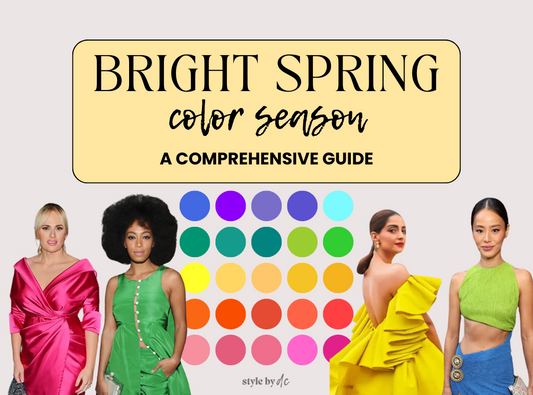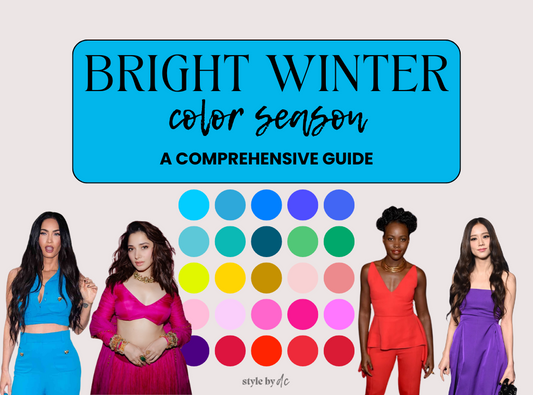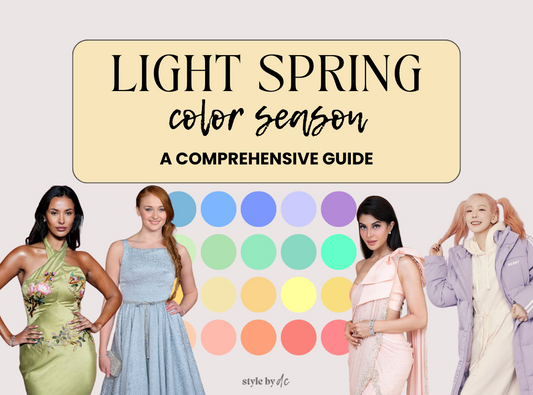Color analysis can be a life-changing tool—but only when you’re actually ready for what it has to offer. If you’re looking for a quick fix, a validation of what you already think, or a hard-and-fast rulebook, you might walk away disappointed.
And that’s okay.
Color analysis isn’t for everyone, especially not in the way it’s commonly sold. So let’s get into it: when isn’t color analysis the right fit? And what might be a better next step instead?

Color Analysis is NOT for You If…
👉 You’re afraid of being assigned a certain season.
If the idea of being told you're a Soft Autumn makes you cringe—even before you’ve seen what the colors actually do for you—it’s worth pausing. Being overly attached to or fearful of certain seasons usually signals a deeper issue: you're approaching color analysis for identity validation, not self-discovery. The magic of this process comes when you’re open to being surprised.
I get it - color is highly personal and we have a lot of emotional responses to colors. This is why if you are going to do a color analysis with a certain season in mind or avoiding a certain season - it’s important to work with an analyst that is also a personal stylist. Analysts that follow the color analysis rule books may leave you with a season you hate - without an explanation of why it could actually work for you or ideas of color alternatives that jive with your personal style and self image.
👉 You think once you know your season, the work is “done.”
There’s a common myth that once you know your season, your style journey is complete. In reality, color analysis is the beginning—not the end—of something bigger. It gives you a framework, not a formula. If you’re looking for instant results and not willing to explore and experiment, you might miss the real value. You can absolutely make quick upgrades from your color results - like maybe a new shade of lipstick or new top. But it takes a bit of trial and error to test out all of your palette and learn how to mix and match colors to align with your style.
👉 You’re more interested in being "correct" than curious.
If you find yourself obsessing over whether you’re True Summer or Soft Summer and polling strangers in Facebook groups, you’re likely chasing correctness more than clarity. I’ve seen people go so deep in the rabbit hole that it must be frustrating and confusing.
But color analysis is an art as much as a science. Your season isn’t a final answer—it’s a starting point. There is an infinite number of colors that exist in a range of shades, hues and tints. Obsessing over what season your shirt may fall into is like trying to catch smoke. What works better is understanding the qualities of the colors that look good on you and how to incorporate them into your wardrobe.
👉 You want to be told what to do, not involved in the process.
Some clients show up hoping I’ll just hand them the “right” answers. But the truth is, the best results happen when you collaborate. When you tell me how certain colors make you feel. When you’re part of the process—not just a passive recipient of a palette. This is why follow up sessions for my virtual color analysis are huge - we can go over how you feel about the colors and how you’re going to move forward with them.
👉 You’re hoping your colors will do all the work.
Your color palette is powerful, but it’s not magic. It won’t fix a disconnected wardrobe or a deeper uncertainty about who you are. It’s a tool. You still have to do the work of choosing what aligns, editing what doesn’t, and defining your style goals. I have a process that helps you understand this after your analysis - so we can be in touch during your style journey.
👉 You’re unwilling to question your current color biases.
We all come into this with some level of bias—preferences based on trend, childhood associations, or even past shopping mistakes. But if you’re unwilling to consider that colors you’ve dismissed might actually serve you, the process stalls before it even begins. It’s absolutely fine to not like certain colors - or to love others - but being open and honest about this can remove the roadblocks that get in the way of color analysis being helpful to you.
So What’s Next?
My goal here wasn’t to talk you out of color analysis completely. I love it and think it’s a highly valuable tool when approached in a holistic and helpful way. If any of the above resonates, you might be a better fit for transformational color analysis or style discovery over transactional color analysis.
Style discovery is where we slow things down. We talk about your values. Your goals. Your fears. Your history with clothing and color. We figure out what feels right on you, not just what theory says should work.
Sometimes we do include color analysis—but only as part of a larger process. One that considers your lived experience, your evolving identity, and how you actually want to show up.



